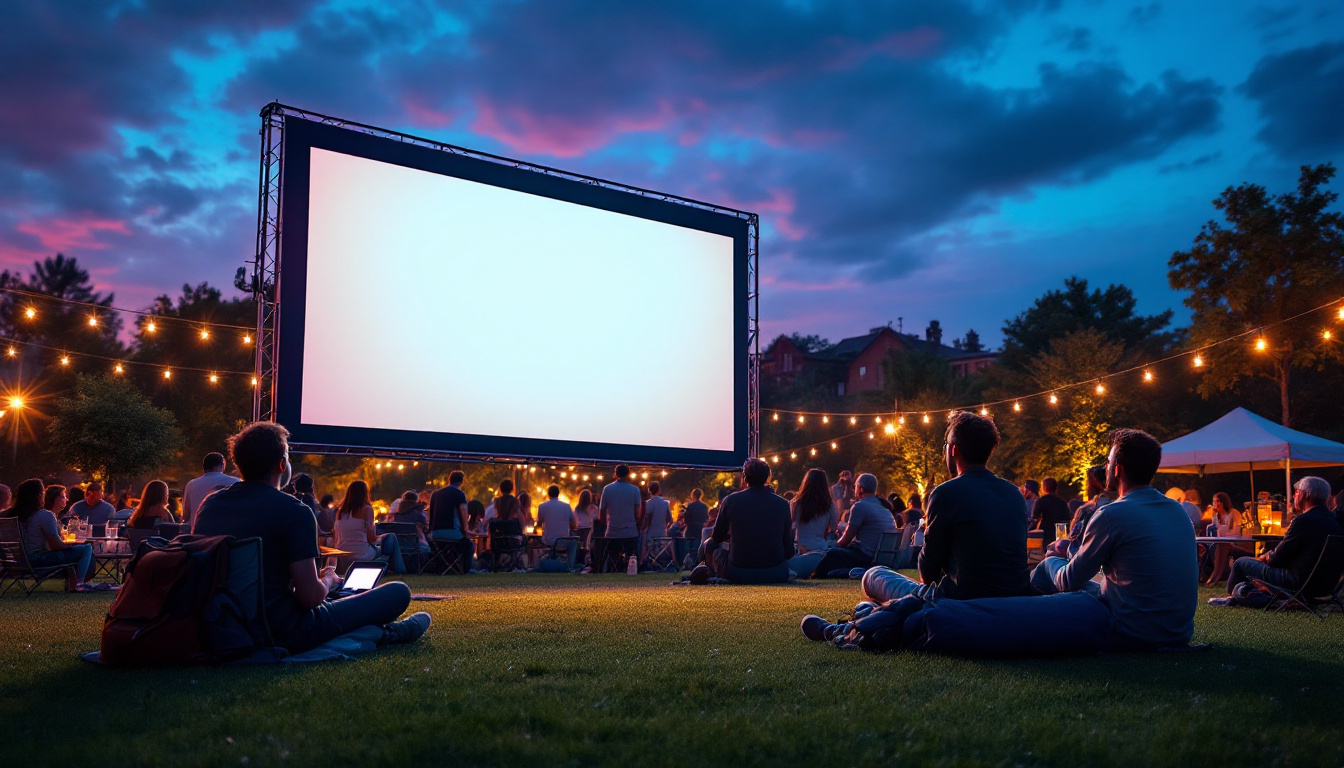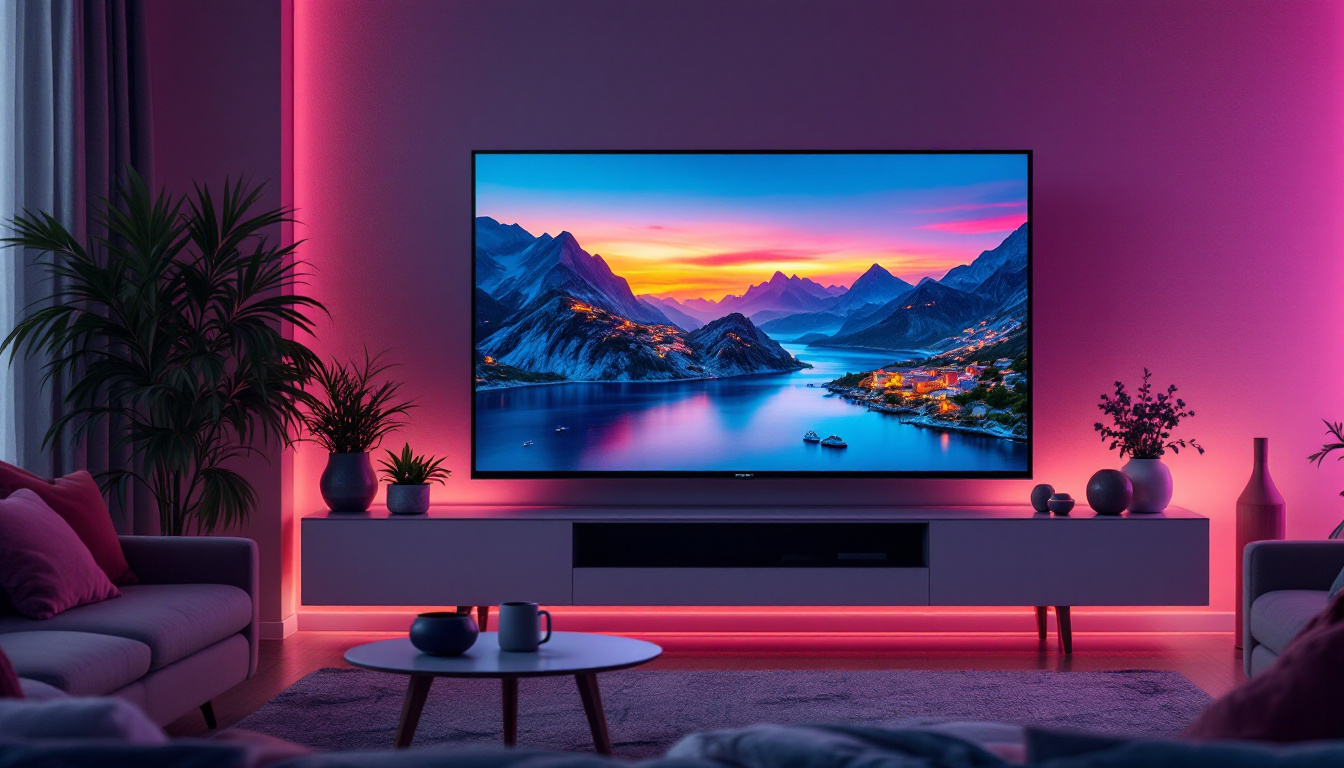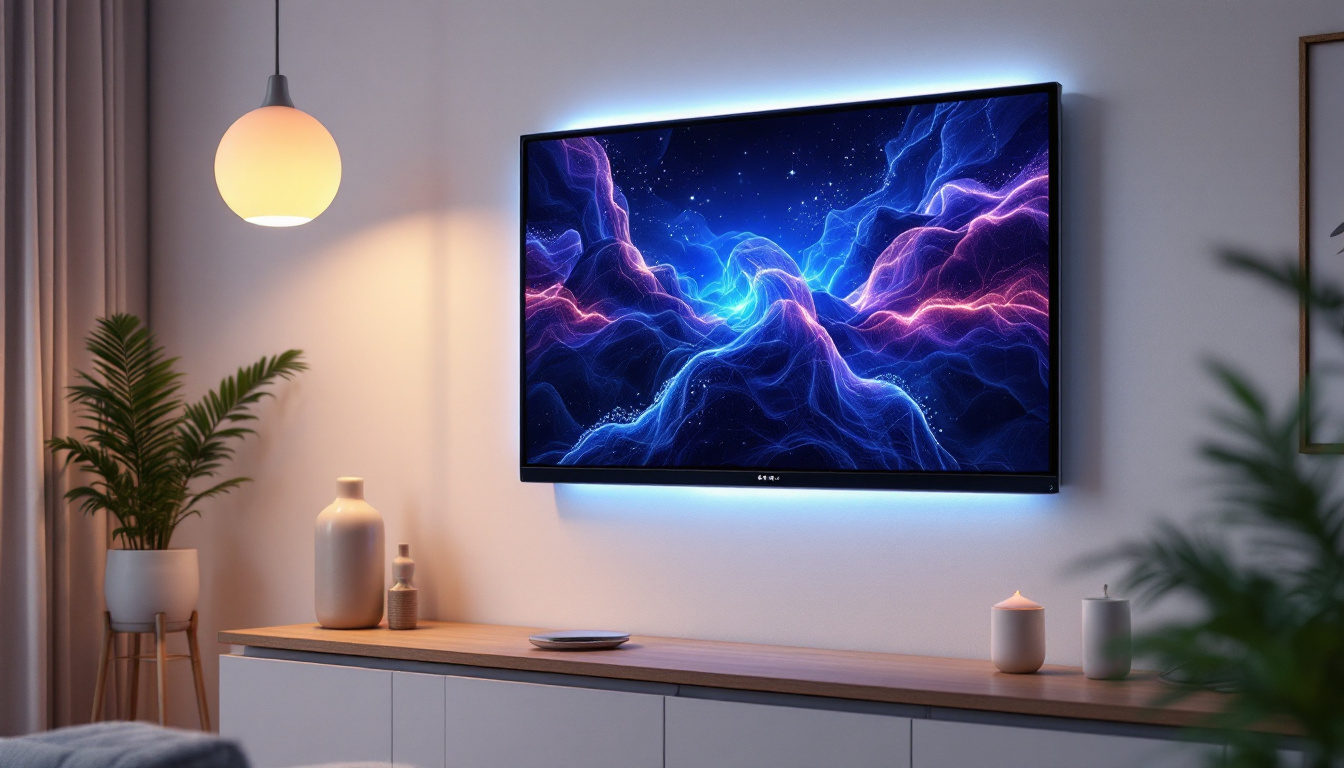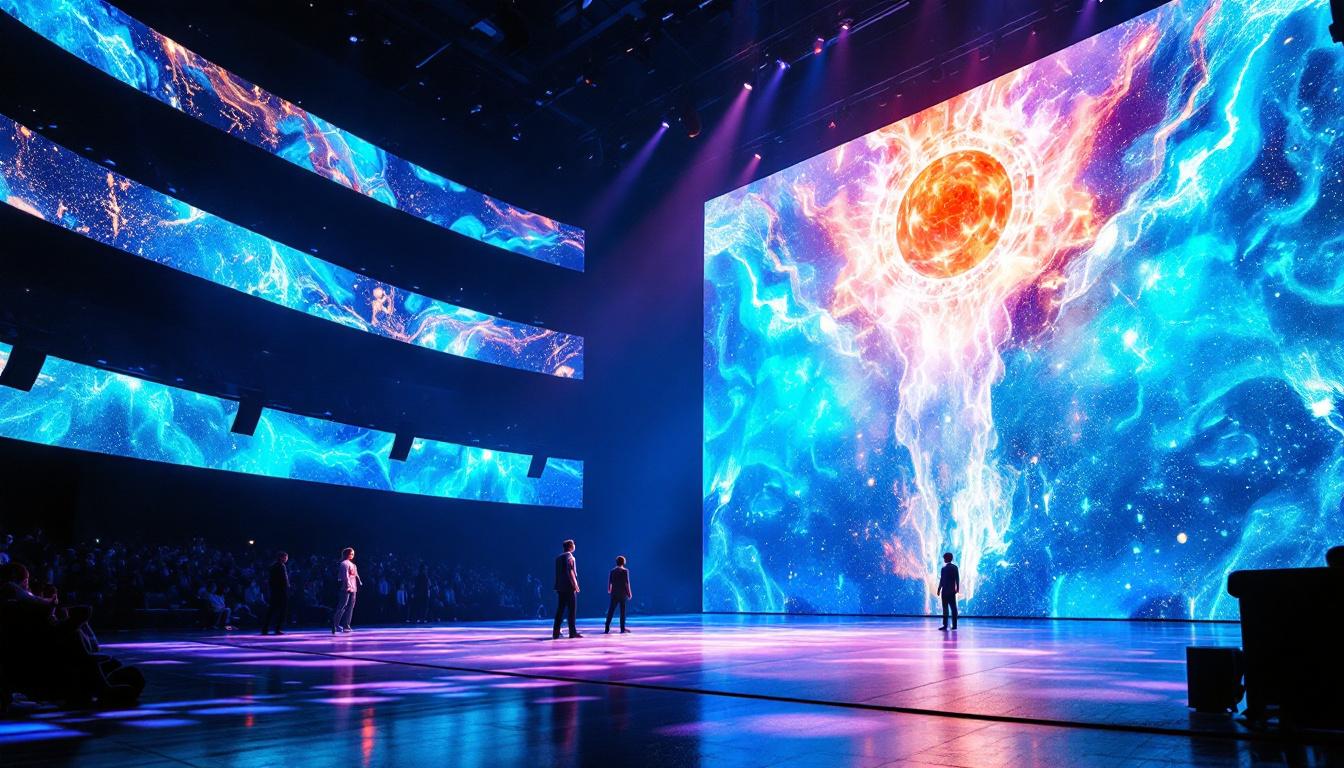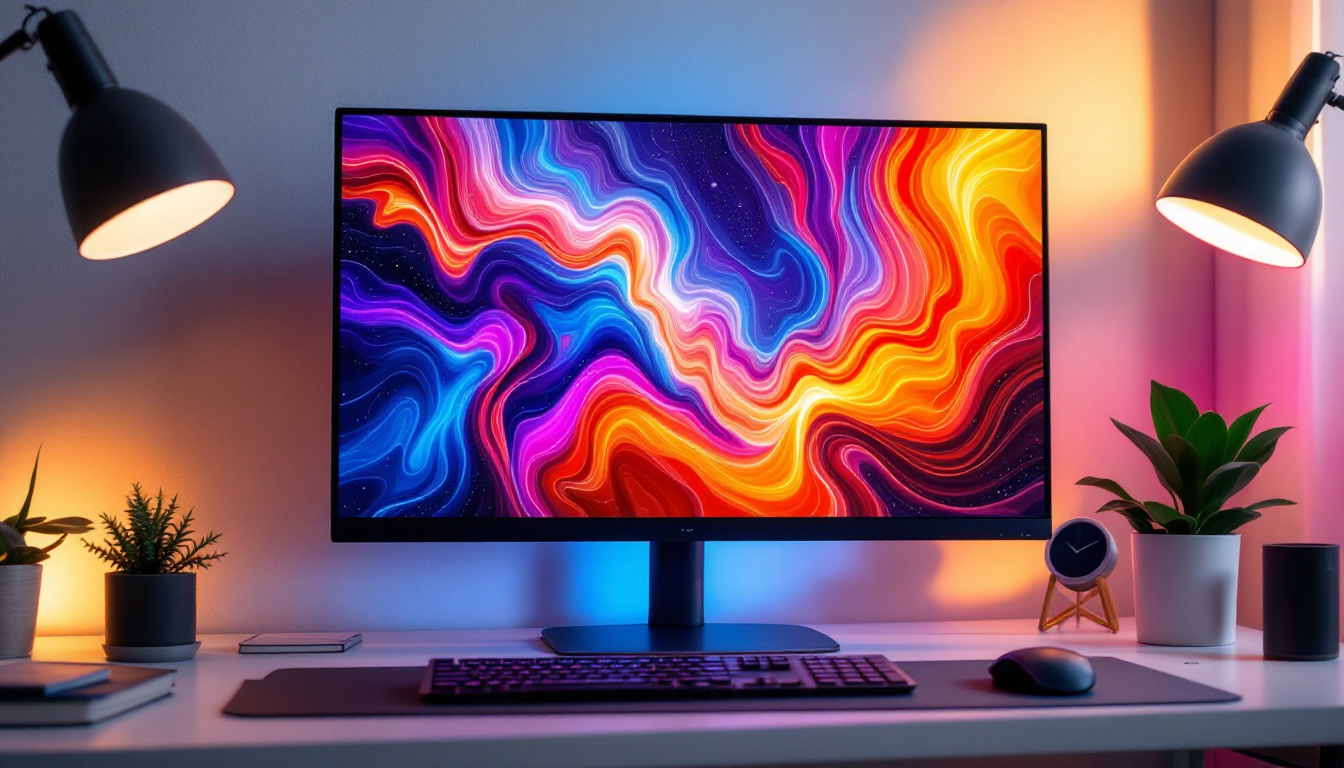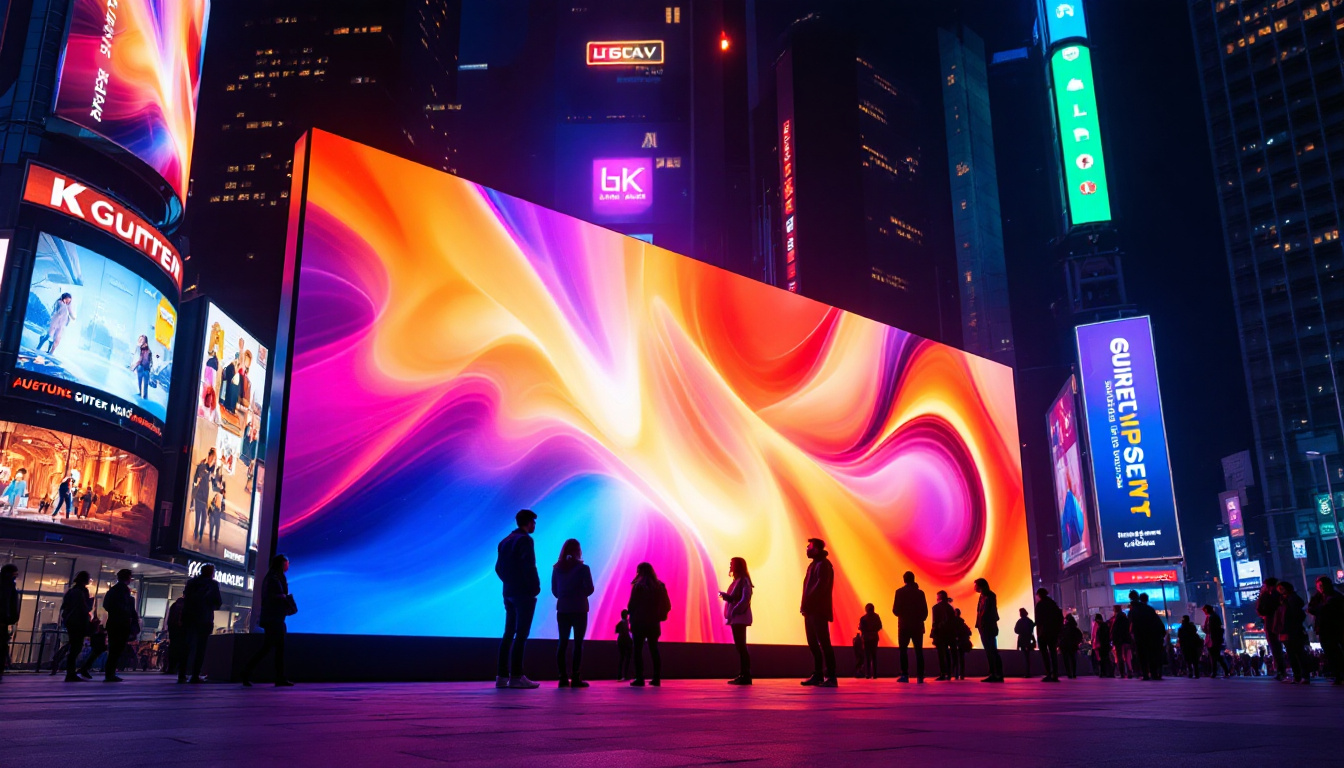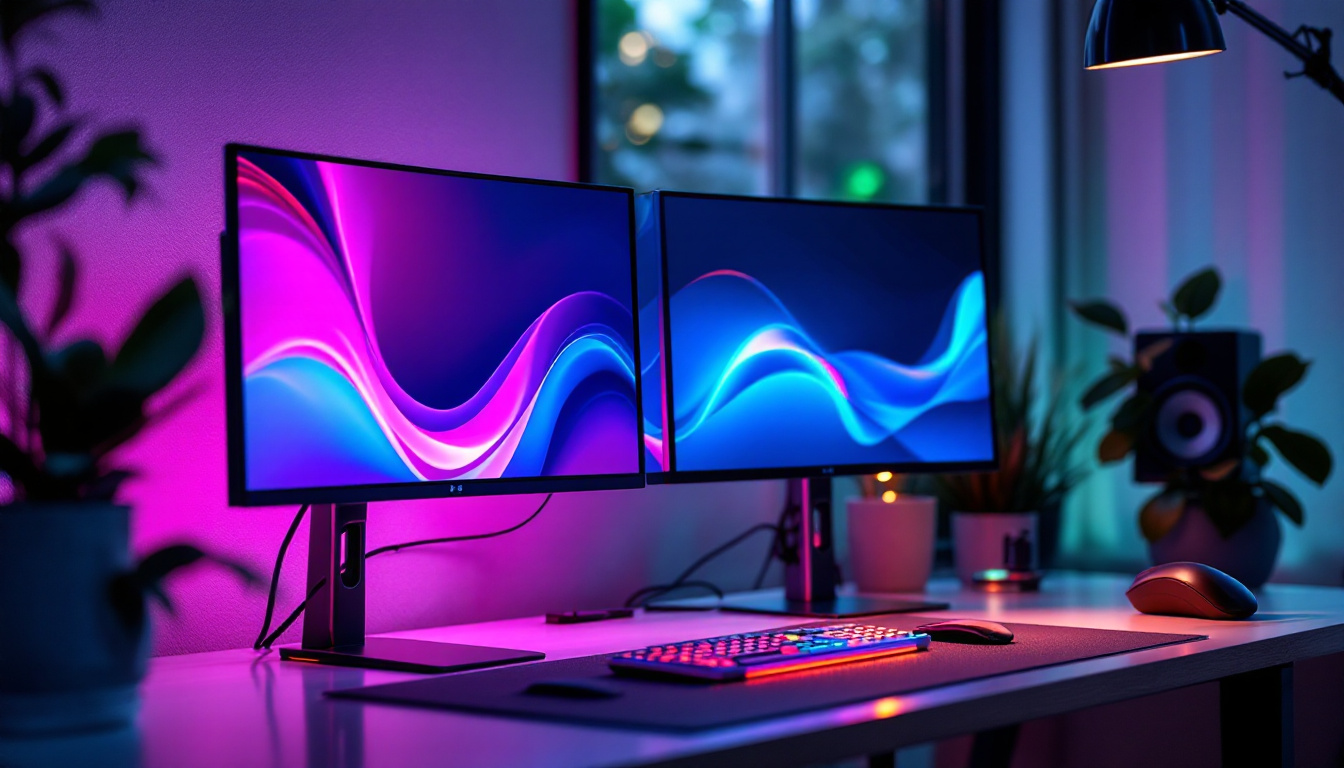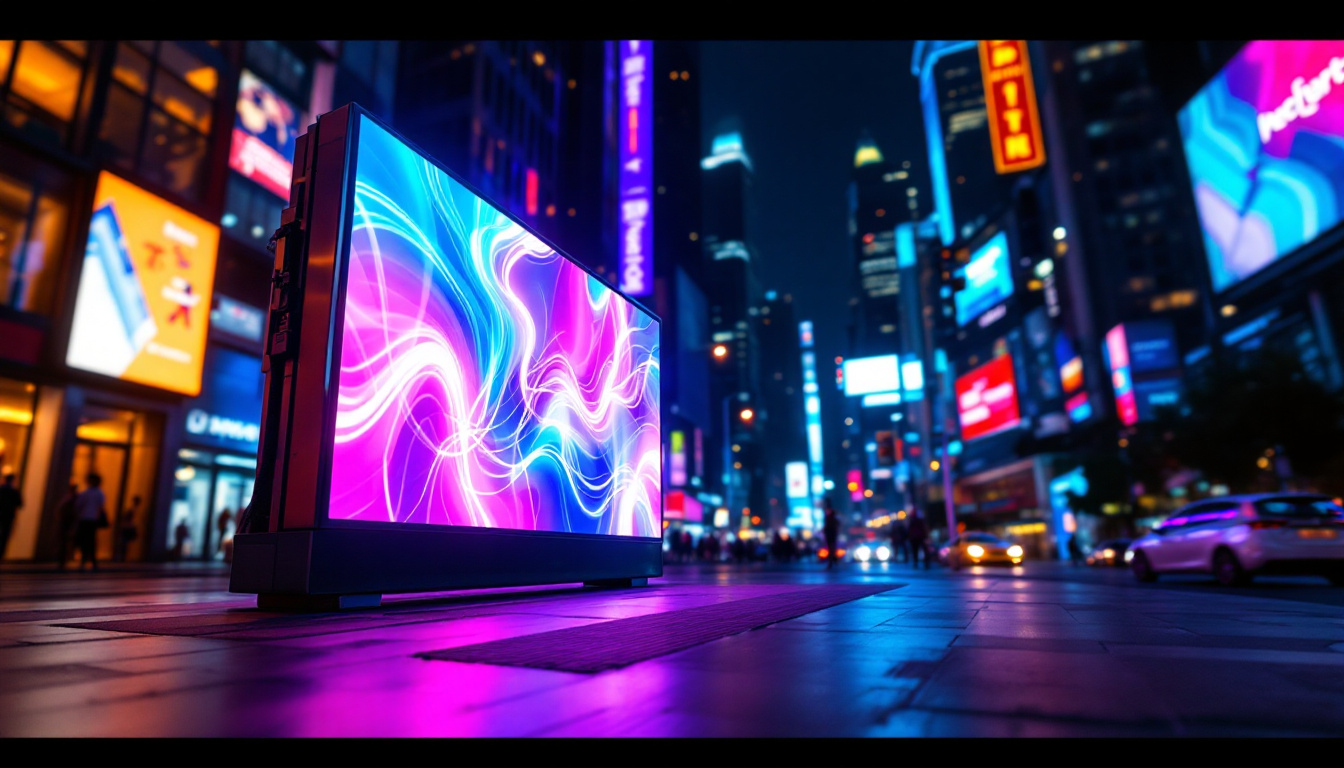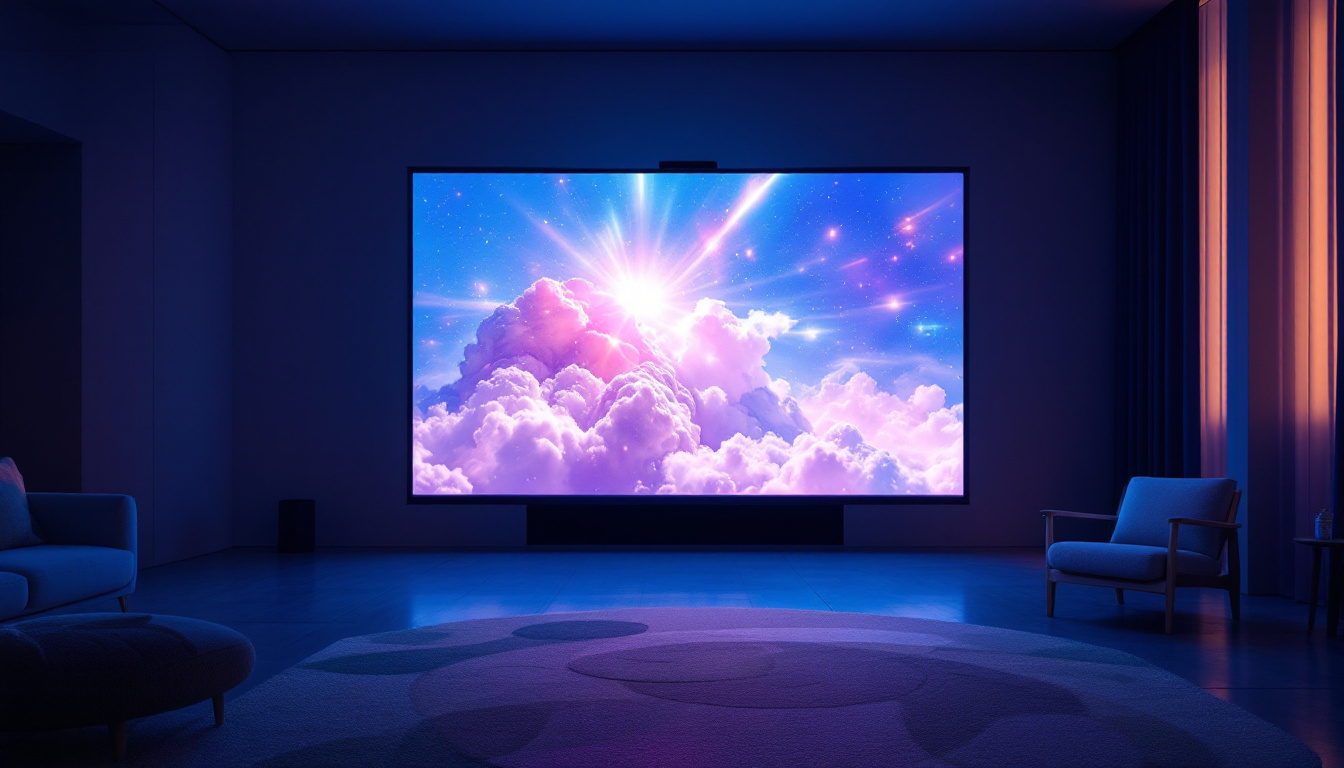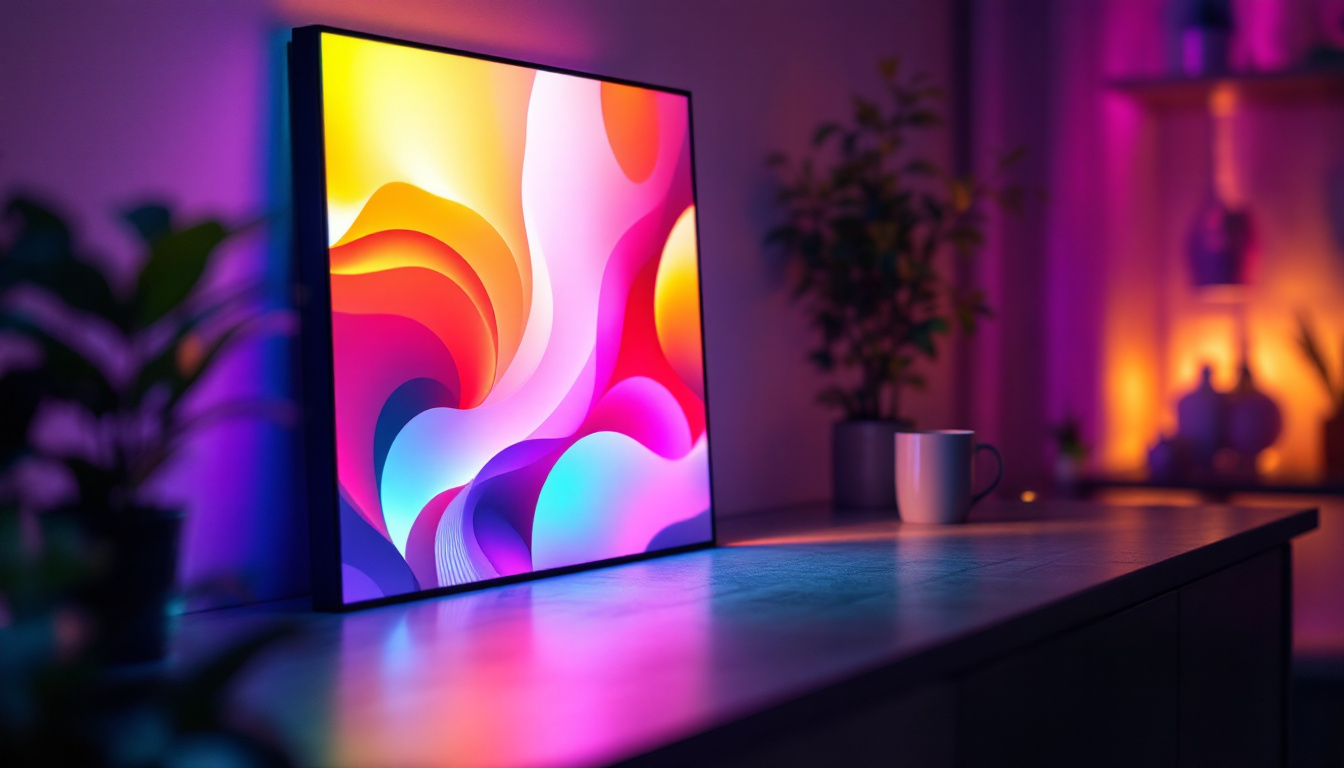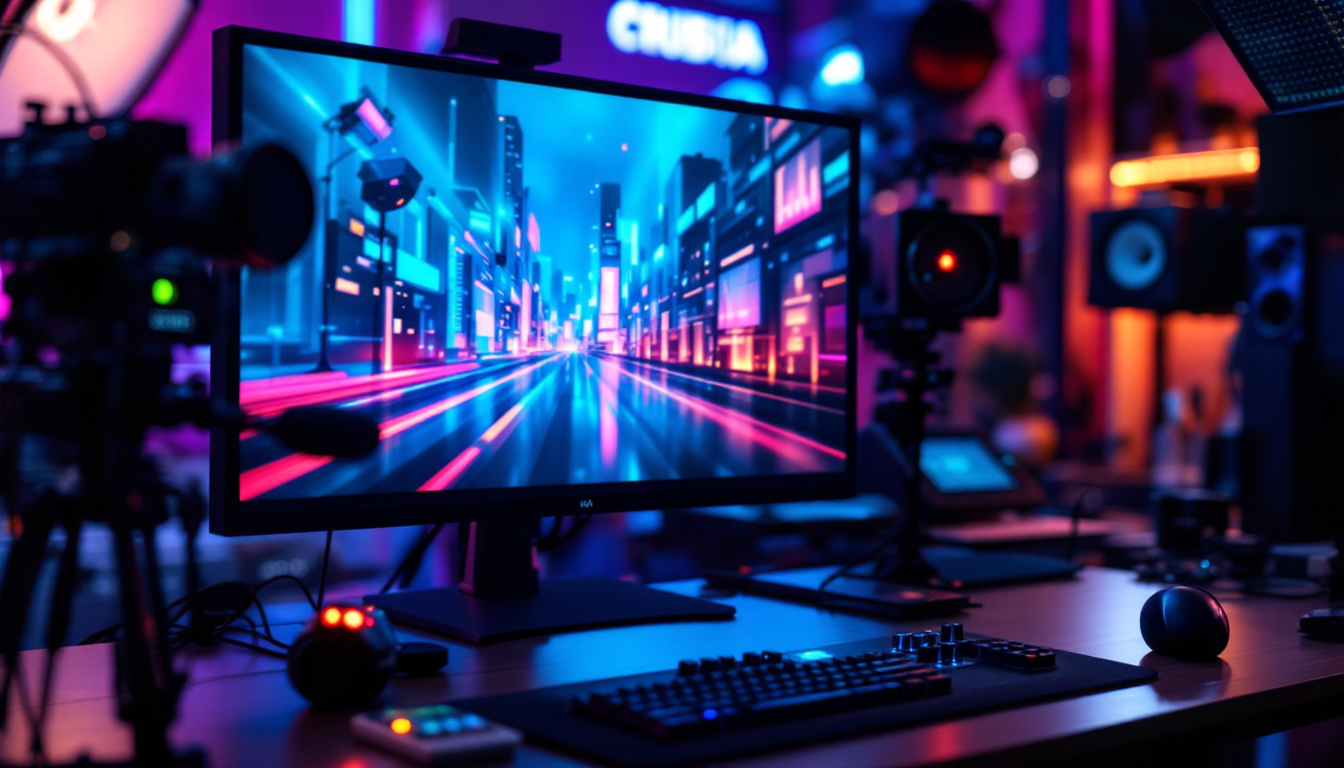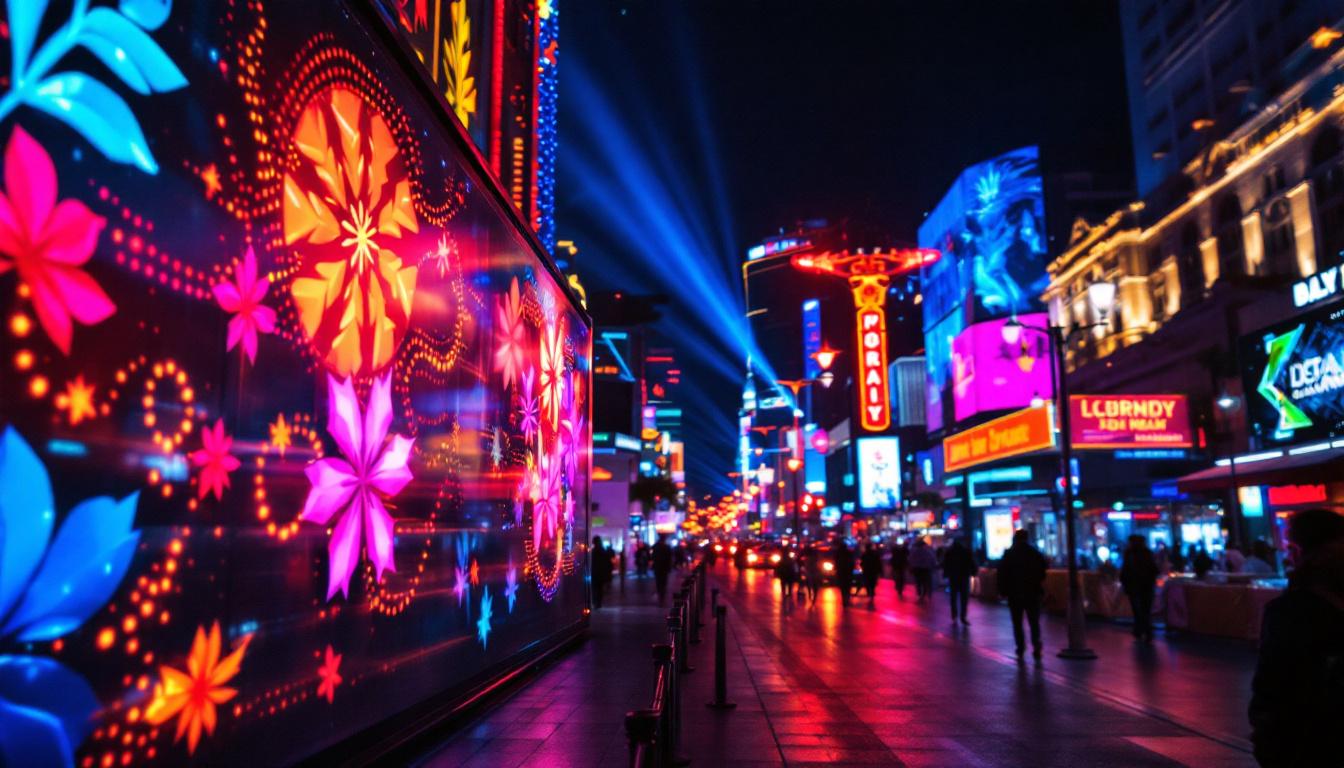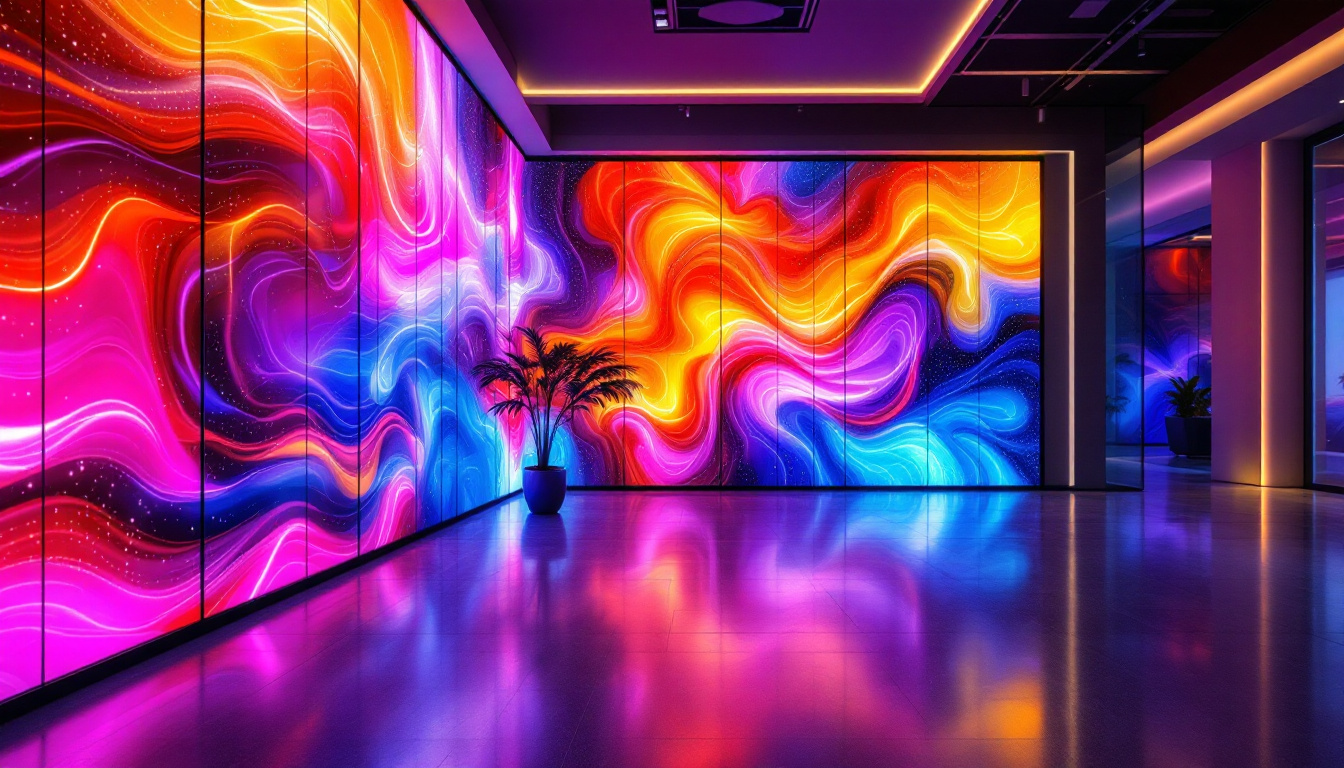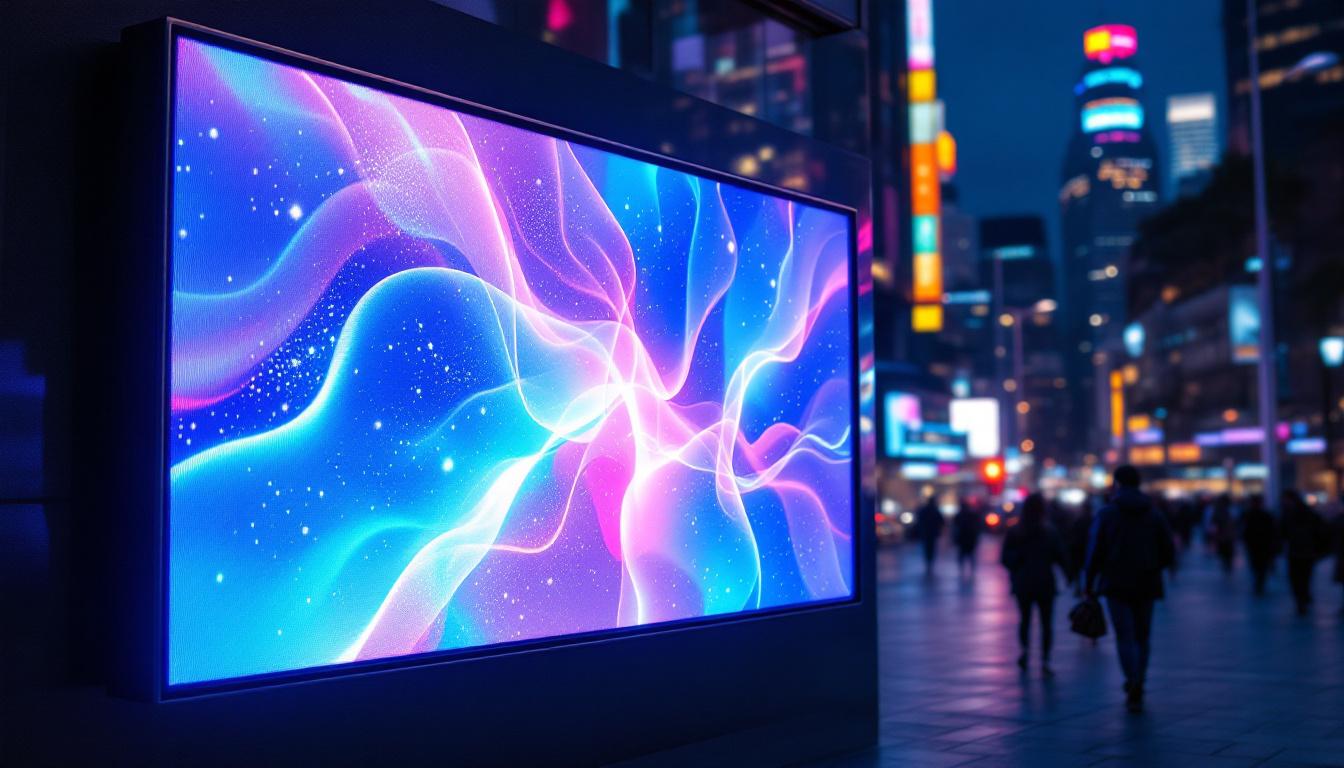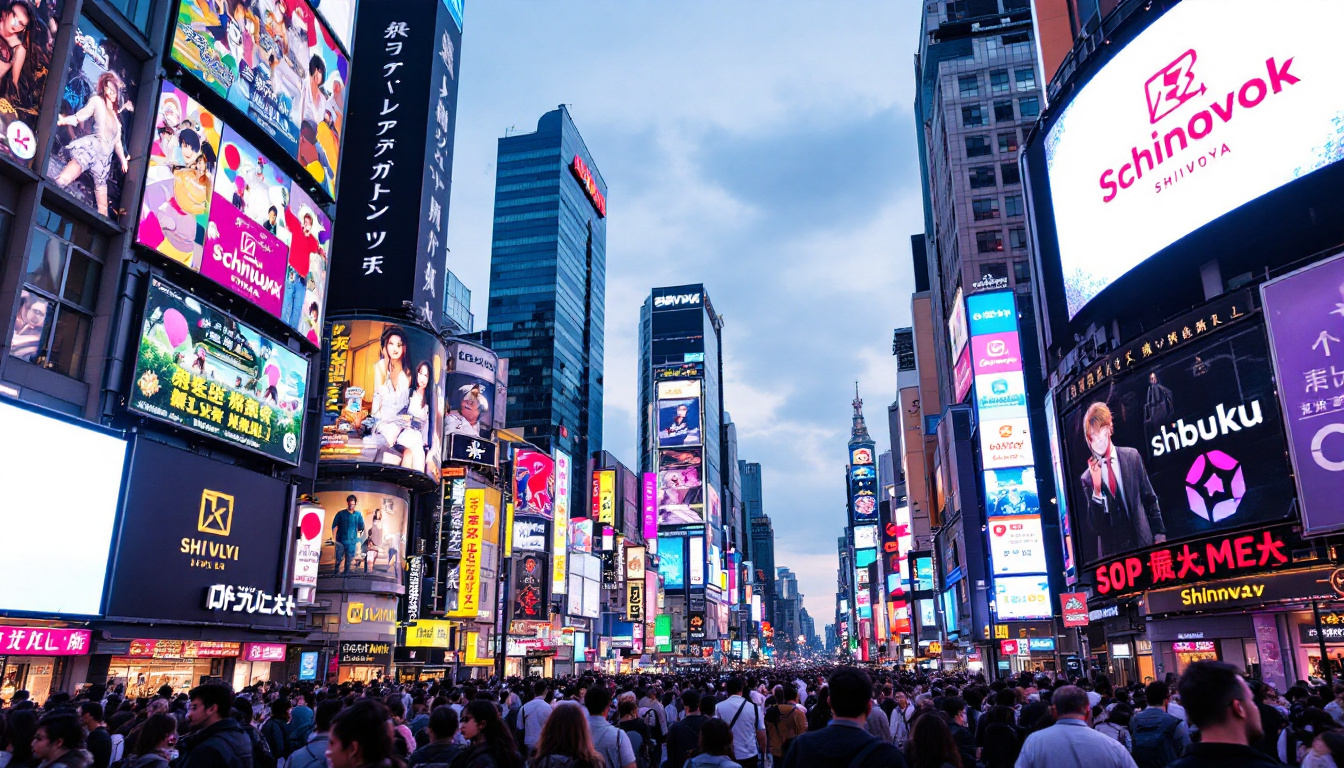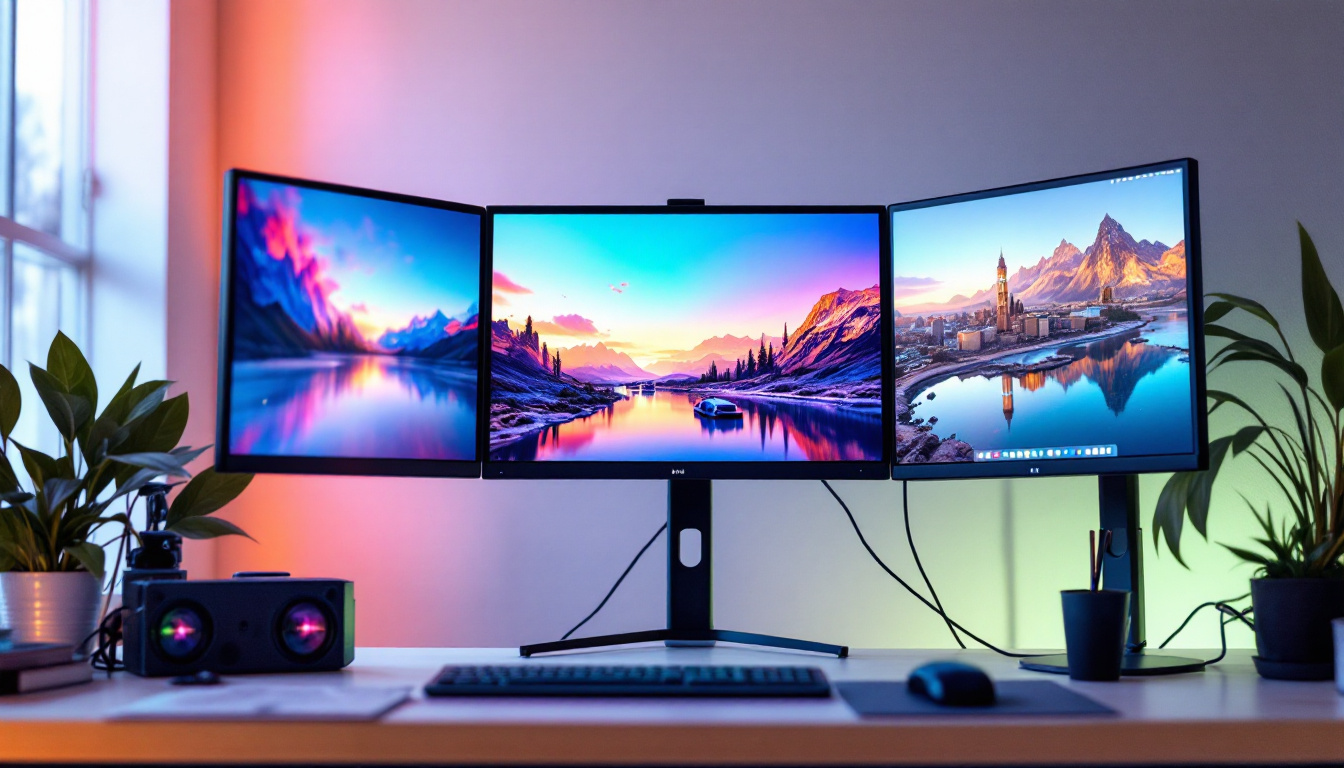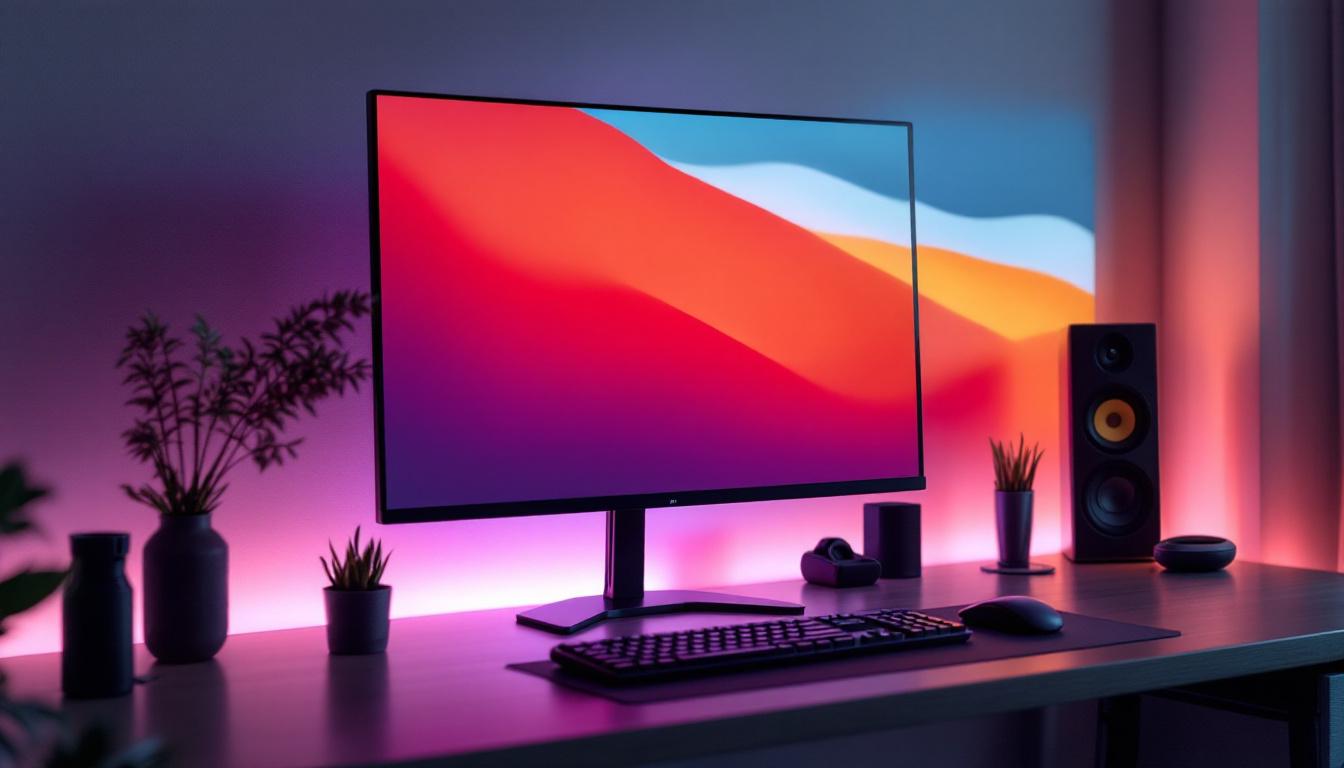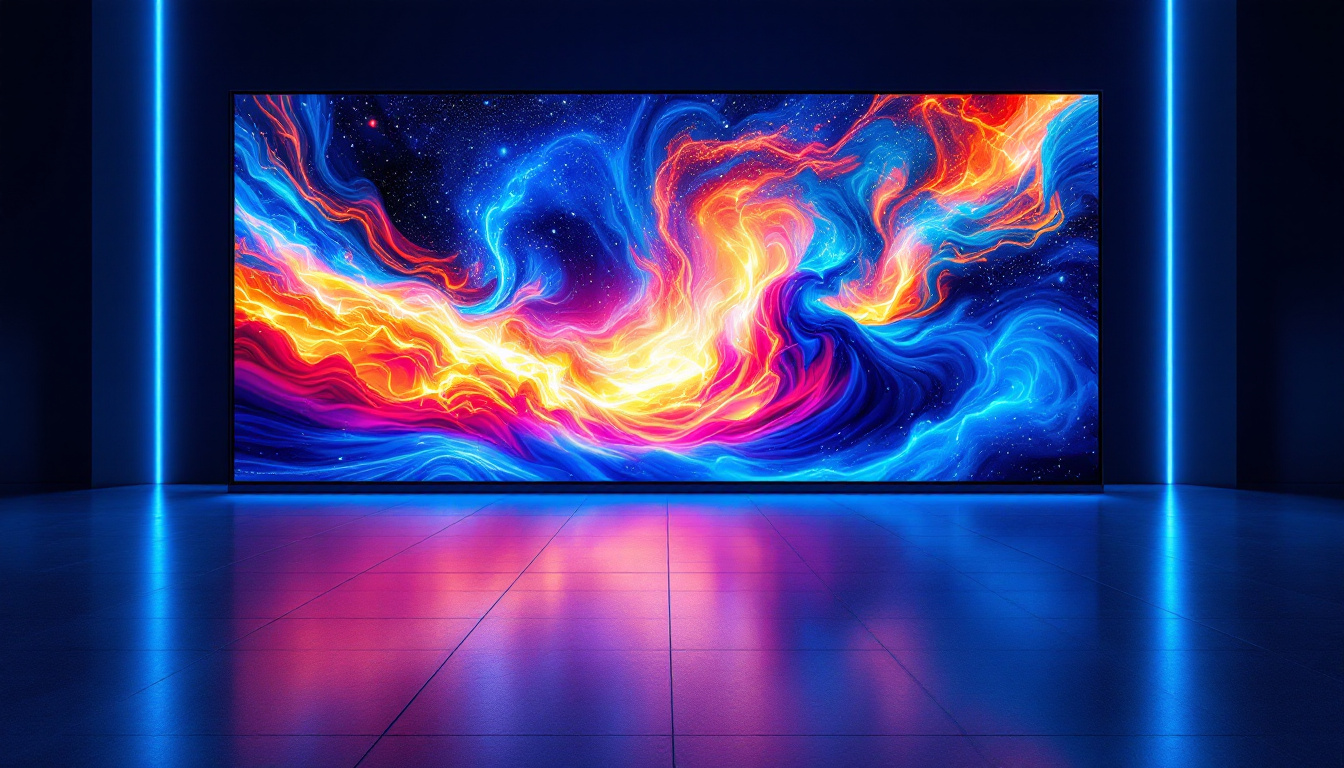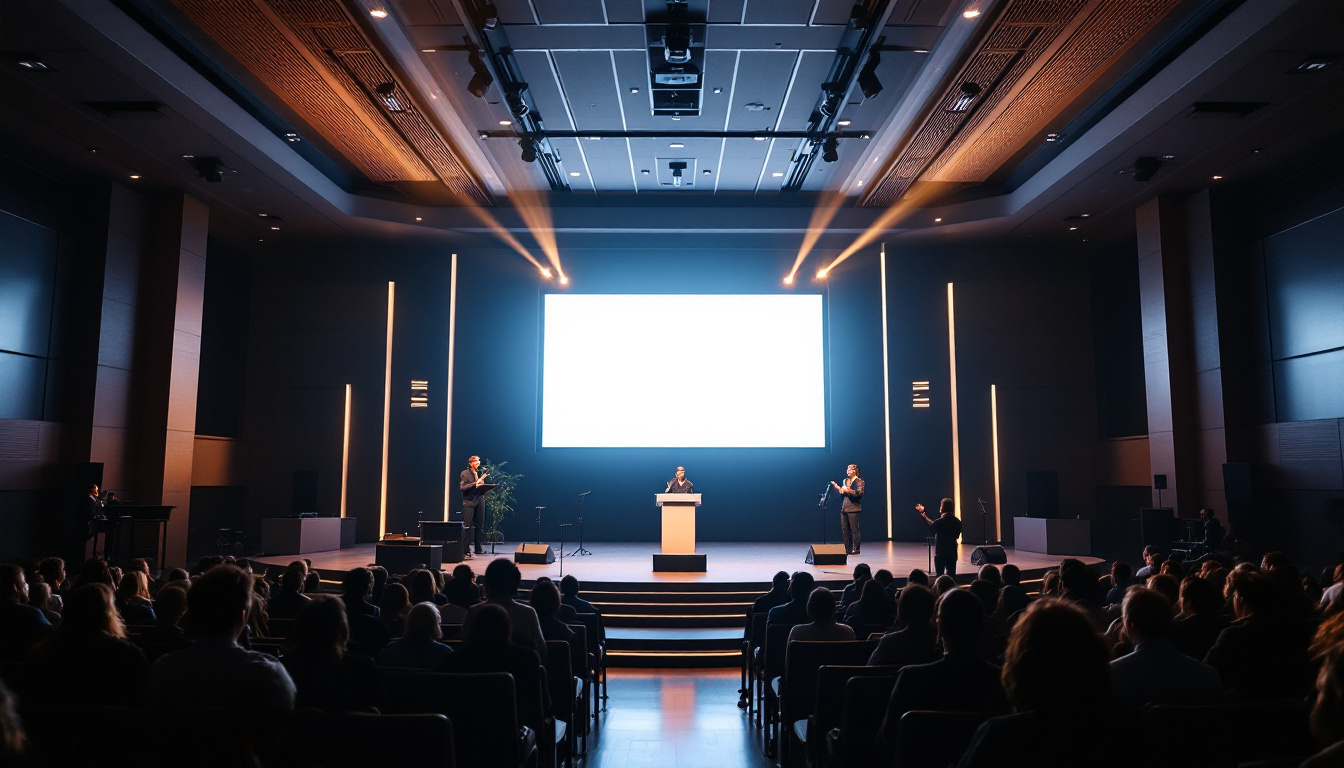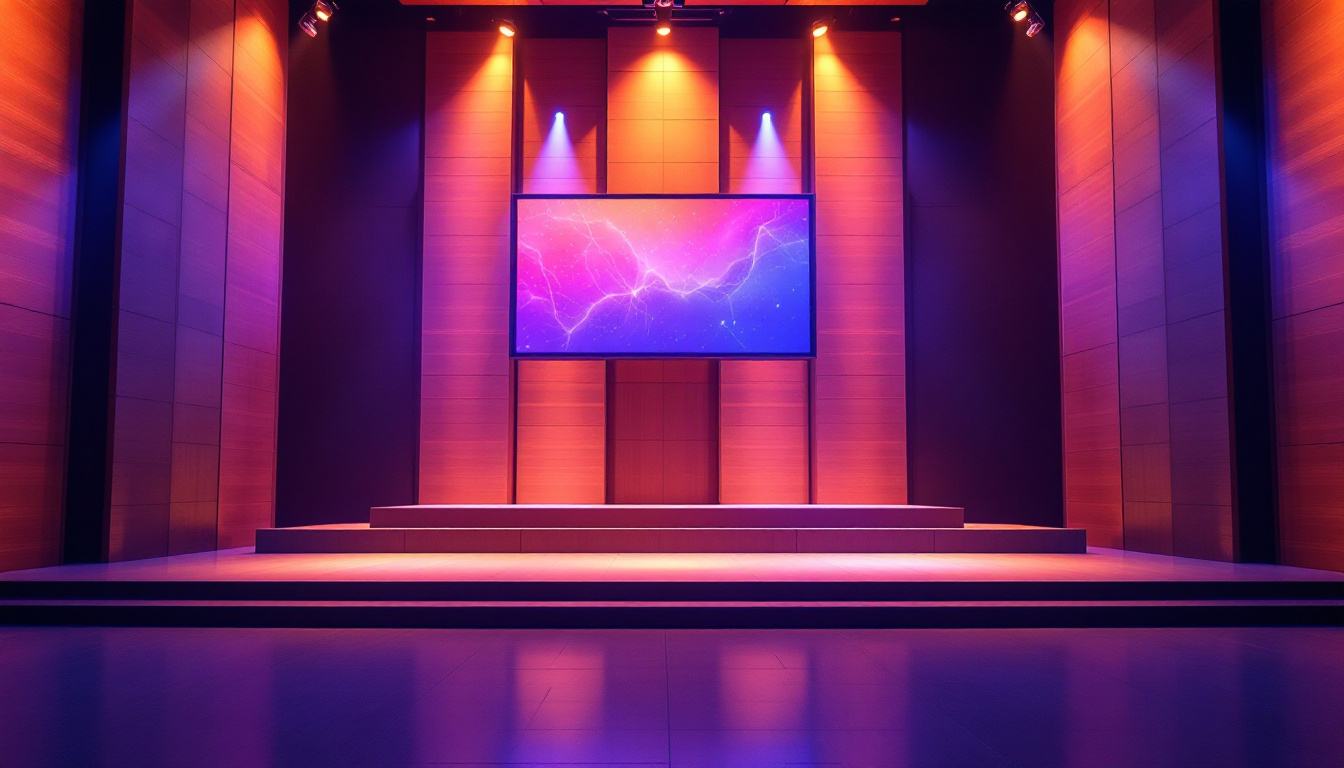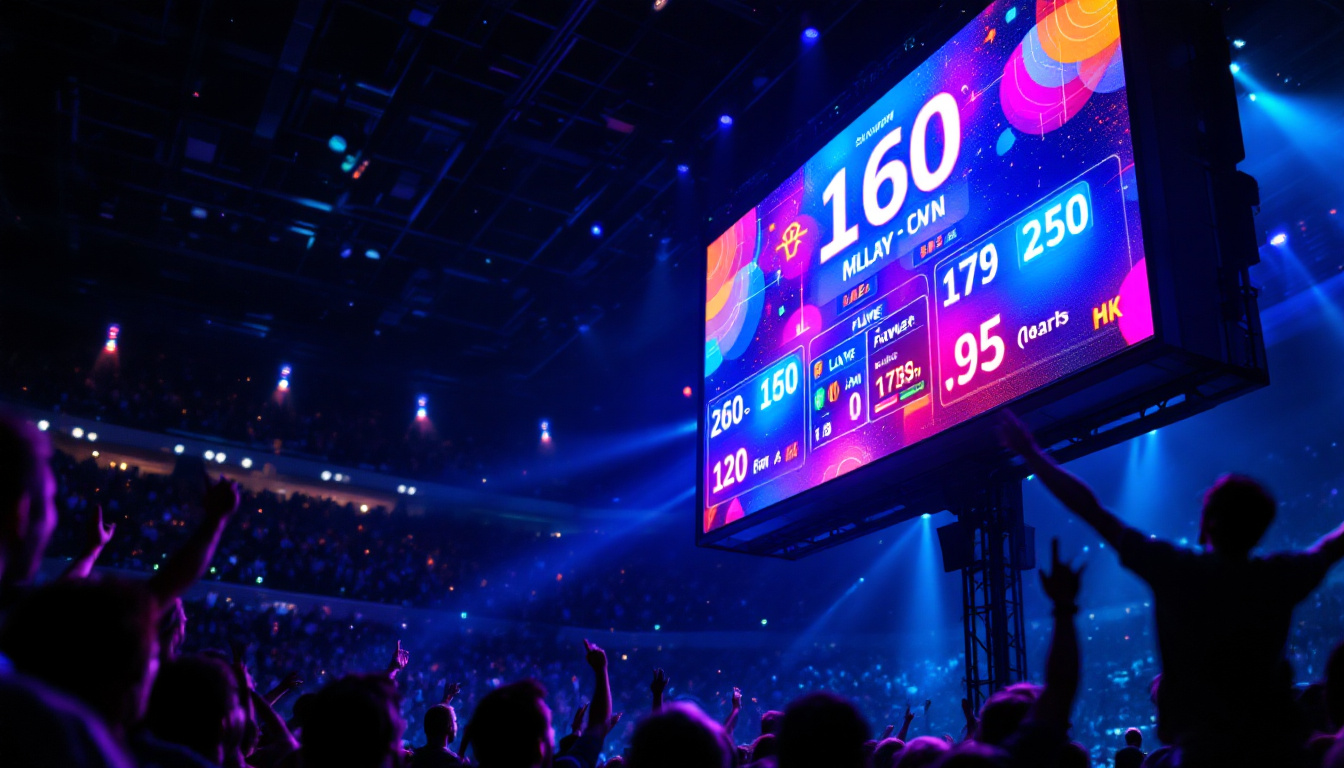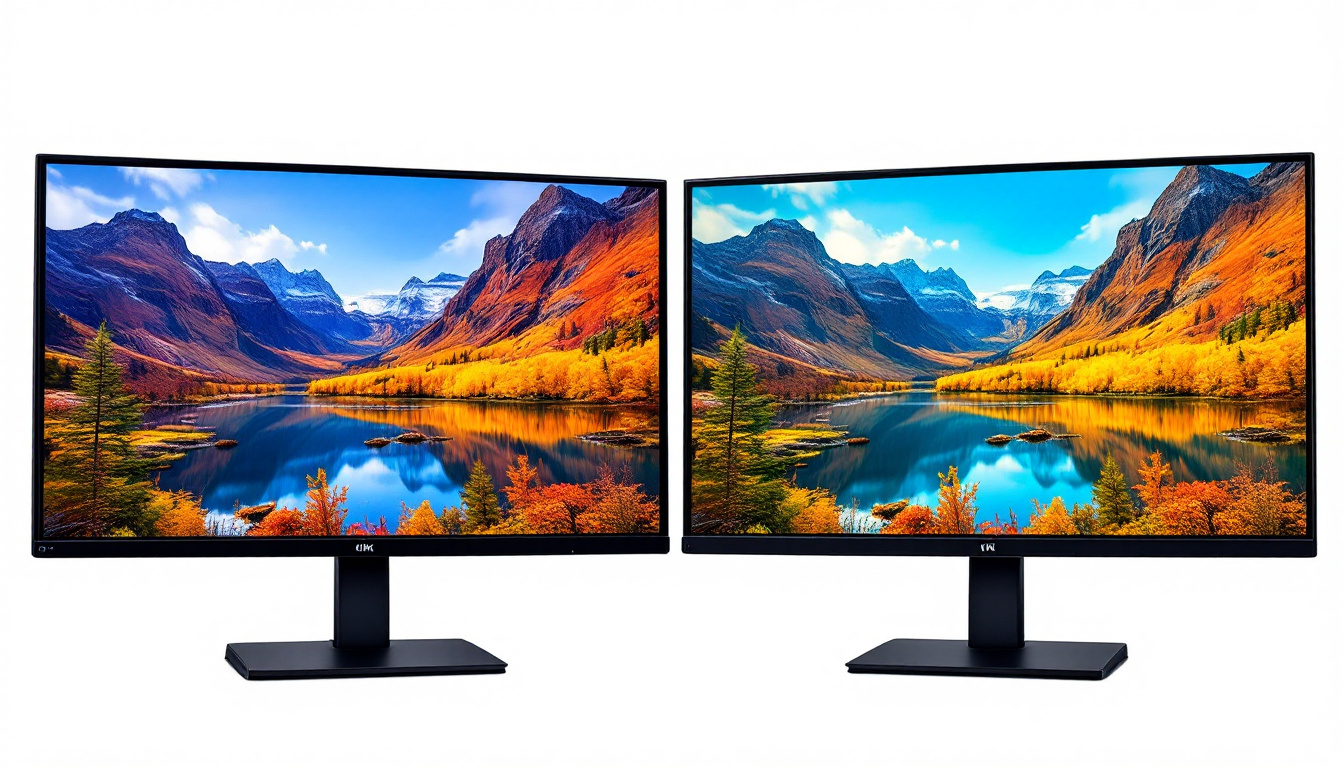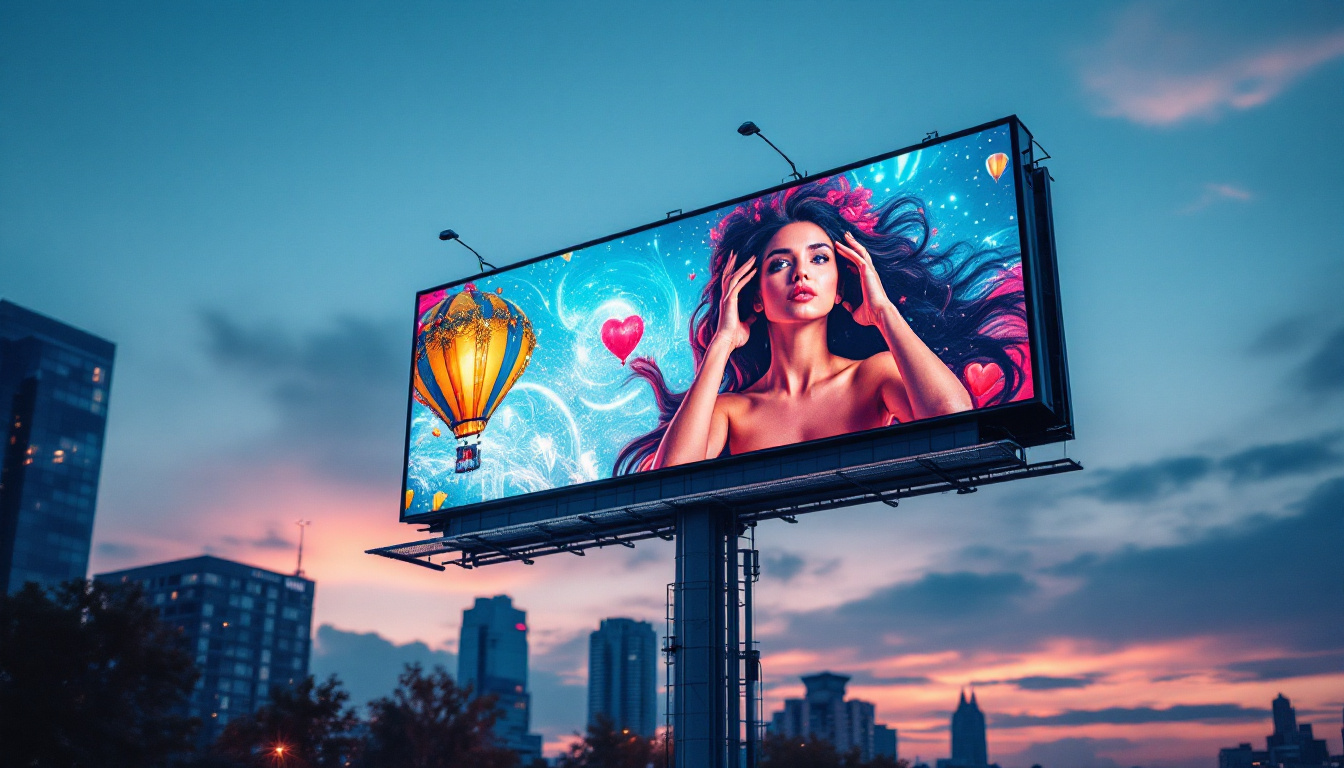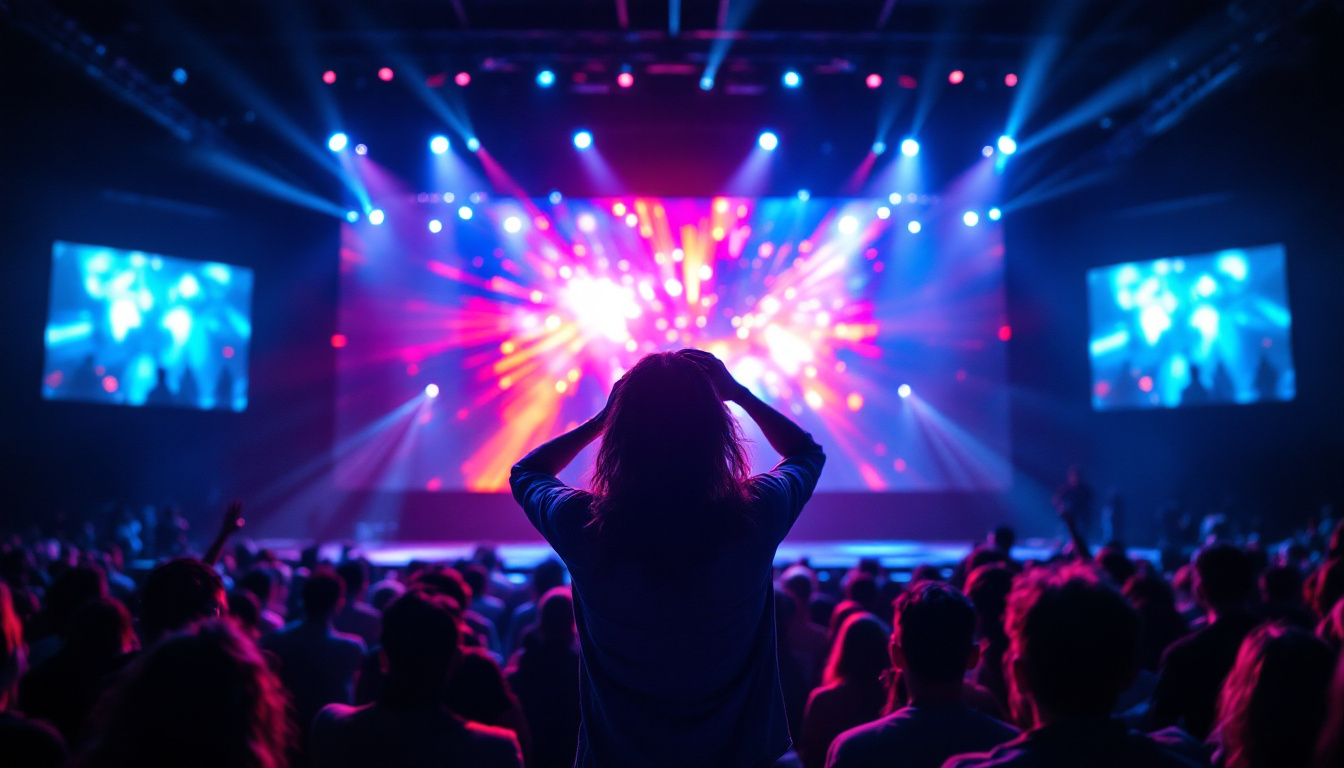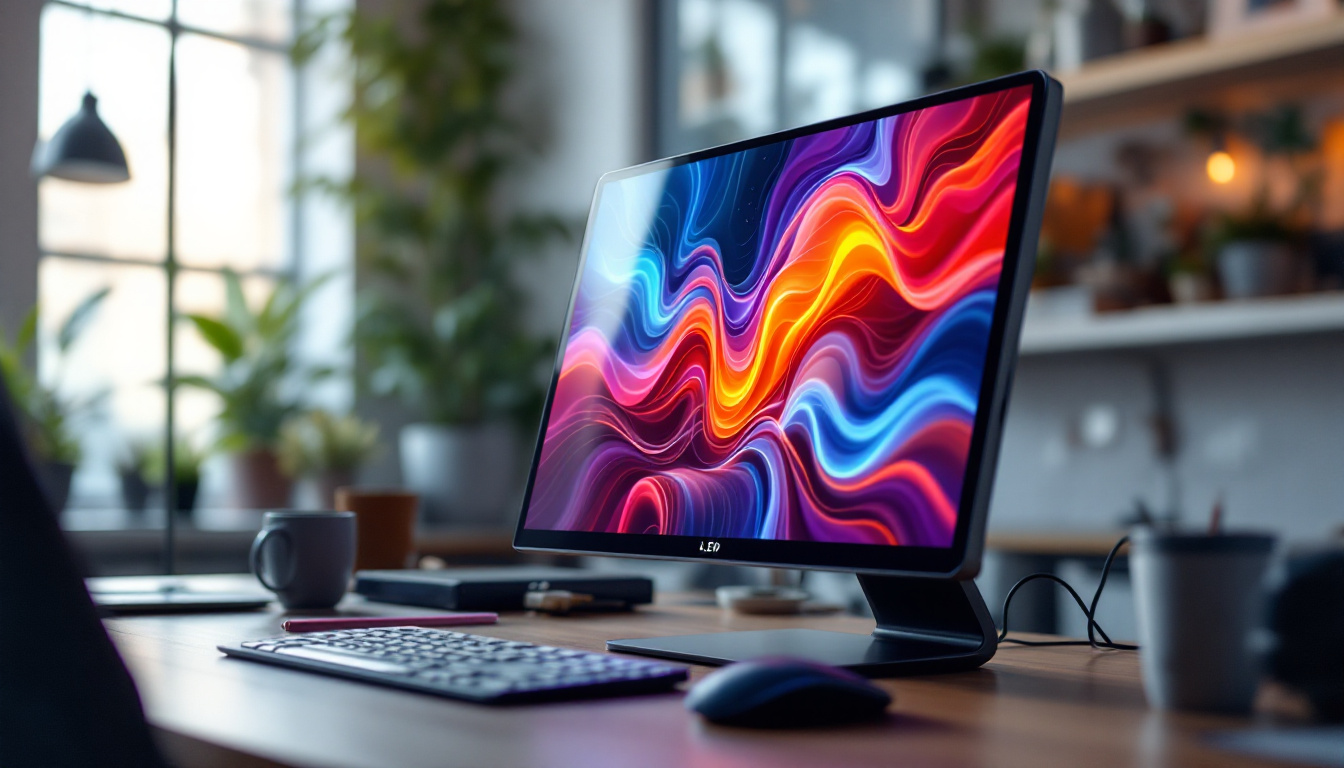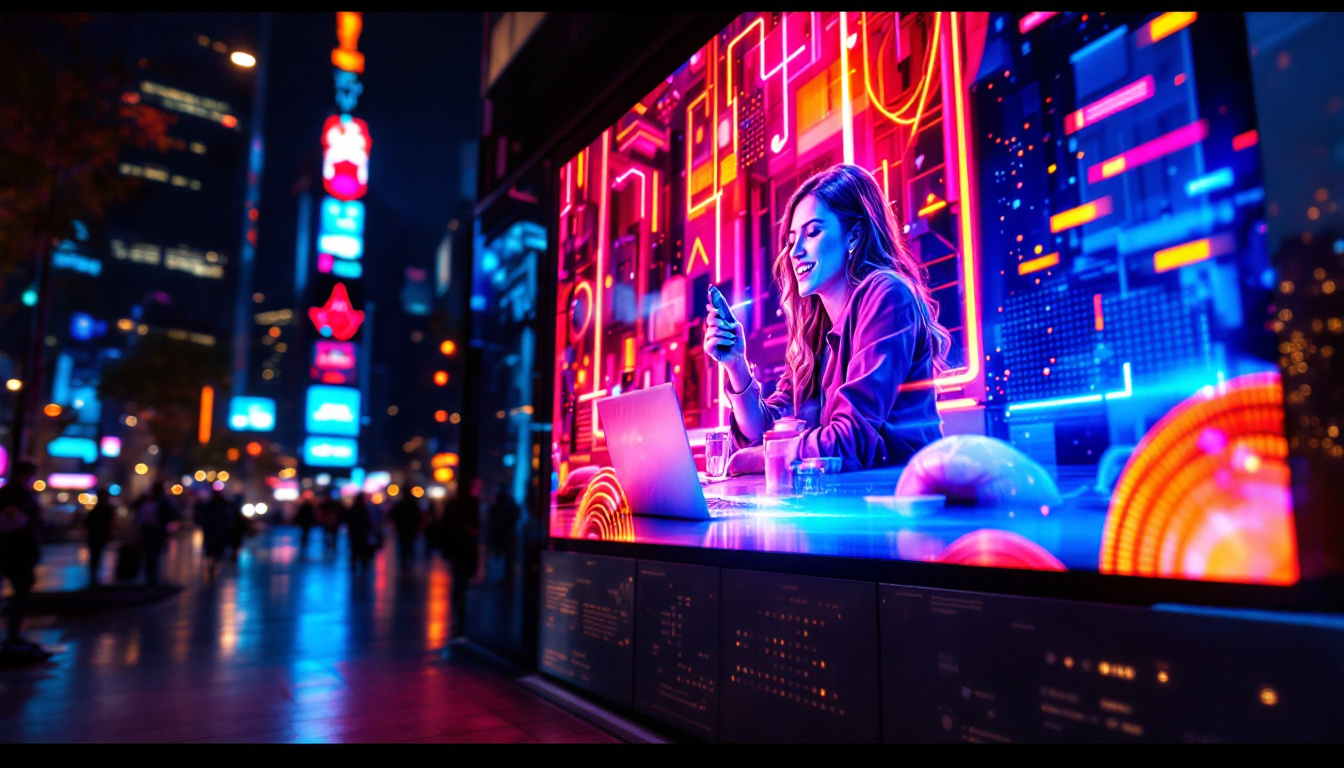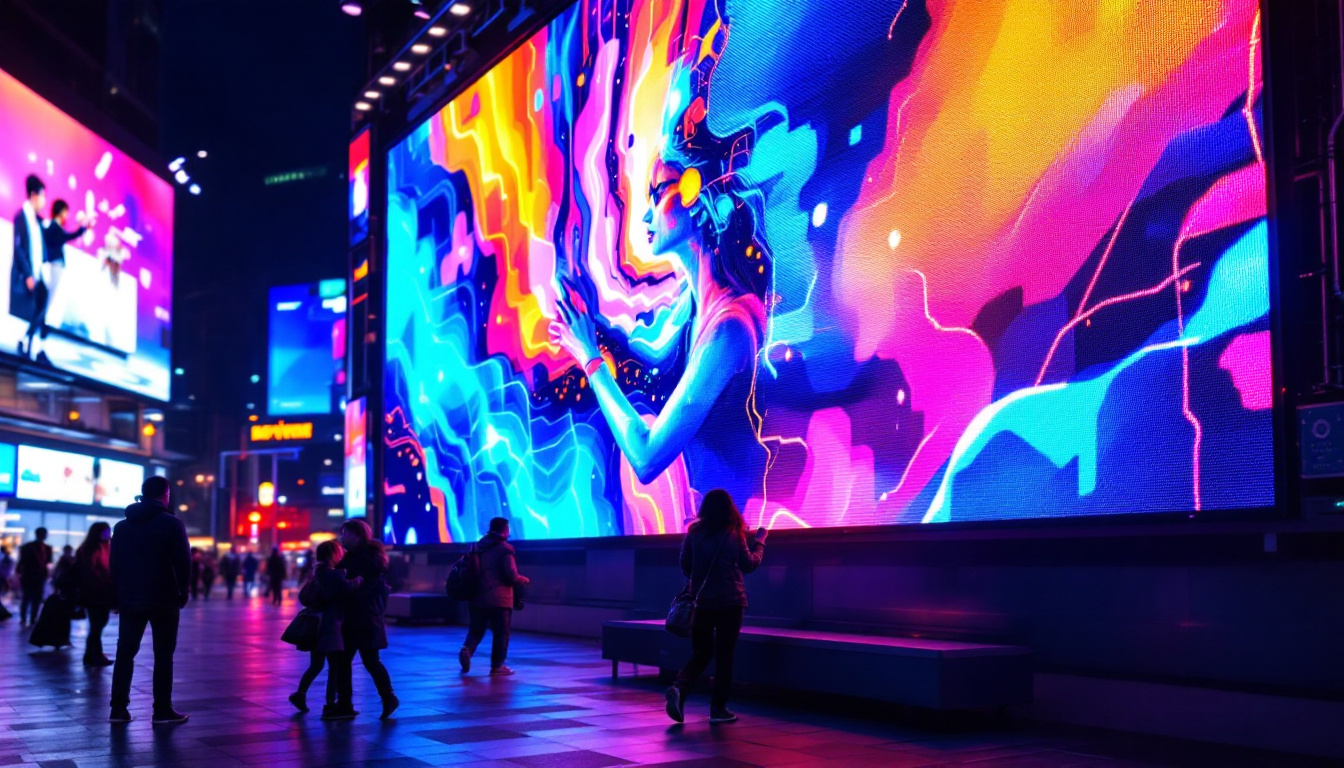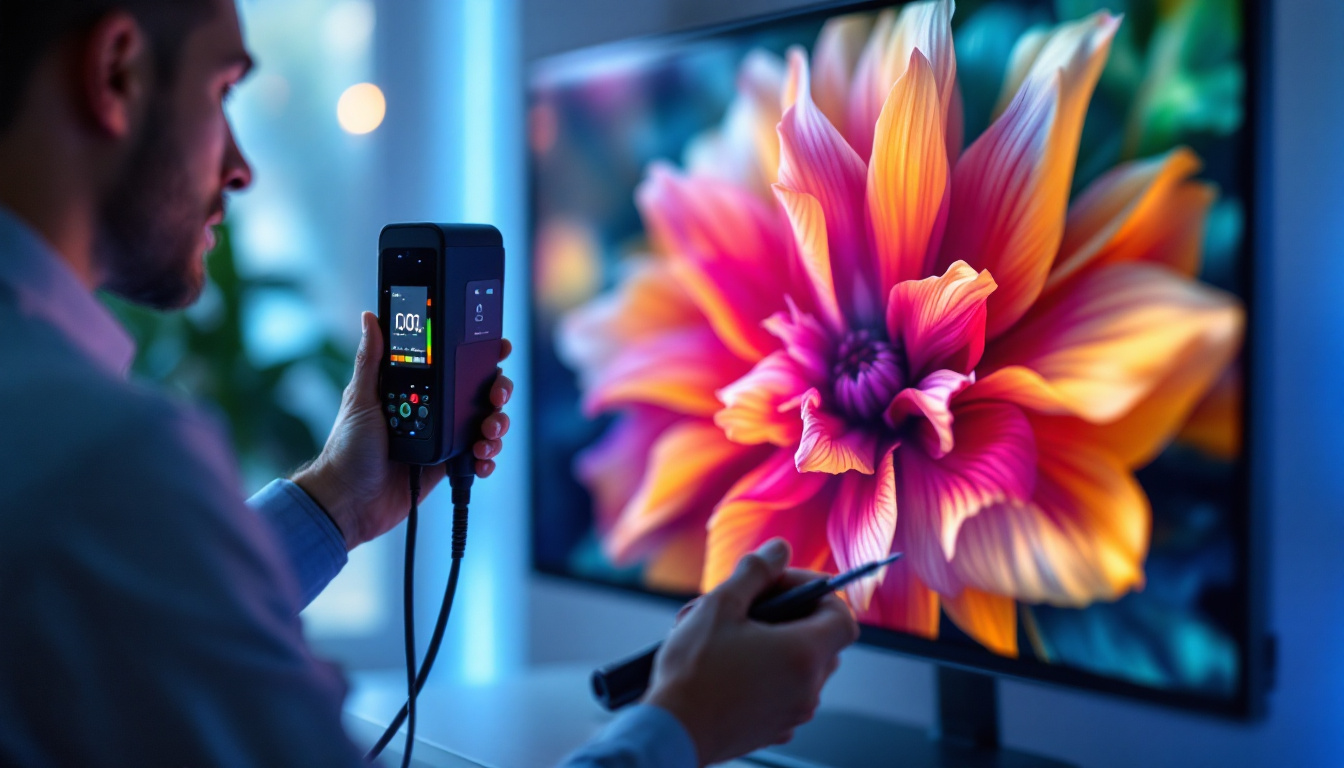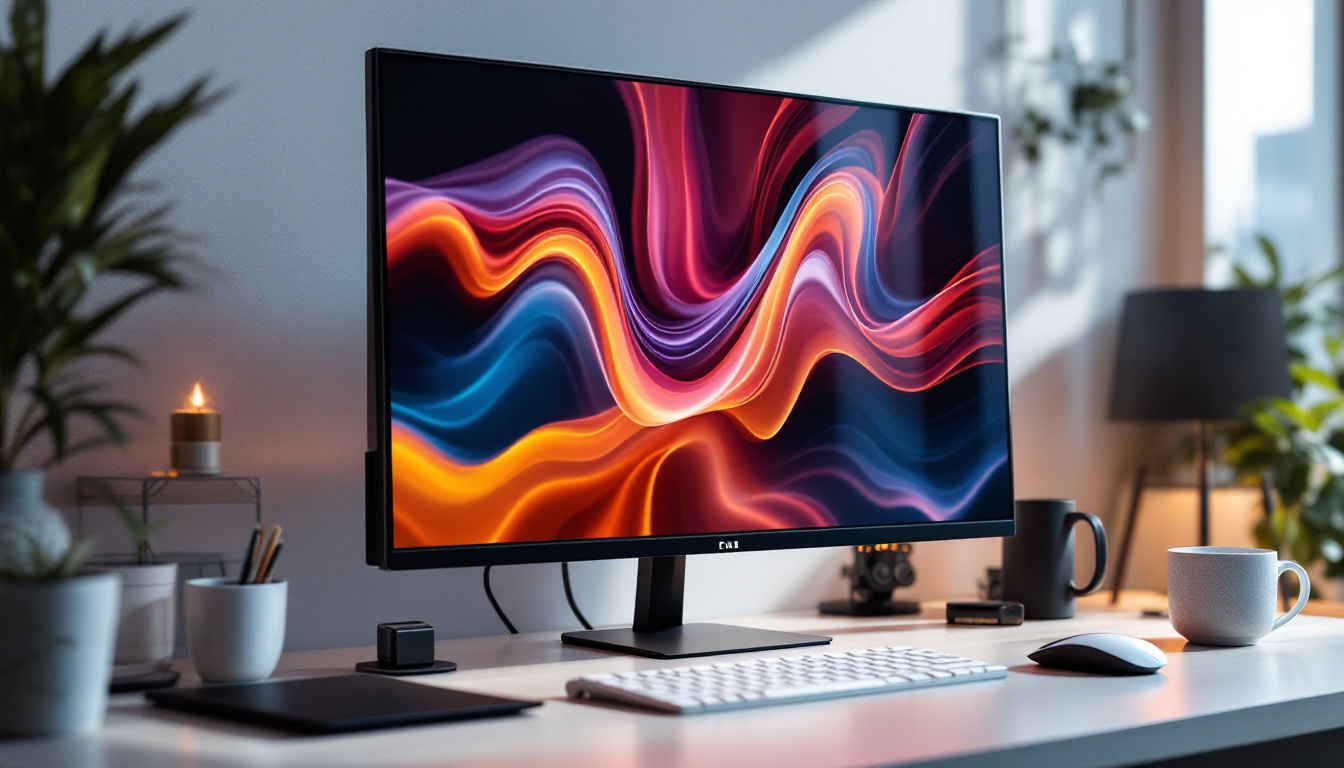In an age where technology continues to evolve at a rapid pace, the demand for high-quality visual experiences has surged. Whether for outdoor movie nights, business presentations, or sporting events, having the right equipment is essential. One of the most effective setups involves using a projector screen stand designed for outdoor use, particularly when paired with LED displays. This article delves into the nuances of outdoor projector screens and the advantages of LED technology, providing a comprehensive guide for enthusiasts and professionals alike.
Understanding Projector Screens for Outdoor Use
Outdoor projector screens are specifically designed to withstand the elements while delivering optimal viewing experiences. Unlike their indoor counterparts, these screens must contend with varying weather conditions, ambient light, and the need for portability. The materials used in outdoor screens are often treated to resist moisture, UV rays, and temperature fluctuations, ensuring that they remain functional and visually appealing even after prolonged exposure to the outdoors.
Types of Outdoor Projector Screens
There are several types of outdoor projector screens available, each with its own advantages and disadvantages. The most common types include inflatable screens, tripod screens, and fixed-frame screens. Inflatable screens are popular for their ease of setup and portability, making them ideal for casual gatherings. They can be quickly inflated and deflated, allowing for spontaneous movie nights or presentations. Tripod screens offer a balance between stability and mobility, often featuring adjustable heights to accommodate different viewing angles. Fixed-frame screens provide a more permanent solution, often delivering superior image quality due to their tensioned surfaces that eliminate wrinkles and distortions.
When selecting a screen, consider the intended use. For example, an inflatable screen might be perfect for a backyard movie night, while a fixed-frame screen could be better suited for outdoor corporate events. Additionally, some screens are designed with specific features such as weather resistance or enhanced contrast to cater to diverse environments, making it essential to assess the conditions in which the screen will be used.
Key Features to Look For
When choosing an outdoor projector screen, certain features can enhance the viewing experience. Look for screens with a high gain, which reflects more light and improves brightness, especially in environments with ambient light. Additionally, screens with a matte finish can help reduce glare from surrounding lights, ensuring a clearer image that is easier on the eyes. Some advanced models even incorporate special coatings that enhance color reproduction and contrast, making them ideal for movie enthusiasts who value picture quality.
Portability is another critical factor. Lightweight materials and easy assembly mechanisms can make a significant difference when setting up in various locations. Many outdoor screens come with carrying cases and setup instructions that simplify the process, allowing users to focus on enjoying their event rather than struggling with equipment. Finally, consider the screen size and aspect ratio to ensure compatibility with the projector being used. A larger screen can create a more immersive experience, but it’s essential to balance size with the available space and viewing distance to optimize the overall experience.
The Role of LED Displays in Outdoor Settings
LED displays have revolutionized the way visual content is presented, particularly in outdoor environments. Their brightness, energy efficiency, and durability make them an excellent choice for outdoor projector setups.
Brightness and Clarity
One of the standout features of LED displays is their exceptional brightness. Unlike traditional projectors, which can struggle in daylight, LED screens provide vivid colors and sharp images, even in bright outdoor settings. This capability is crucial for events like outdoor movie screenings or presentations during the day.
Moreover, LED technology allows for a wider color gamut, resulting in more vibrant and lifelike visuals. This enhances the overall viewing experience, making it more engaging for audiences. The ability to display high-definition content with remarkable clarity means that viewers can appreciate intricate details, whether it’s a cinematic masterpiece or a dynamic presentation. As a result, LED displays have become a popular choice for concerts, sports events, and festivals, where visual impact is paramount.
Energy Efficiency and Longevity
Energy efficiency is another significant advantage of LED displays. They consume less power compared to traditional projection systems, making them a more sustainable choice for outdoor events. This efficiency not only reduces electricity costs but also minimizes the need for frequent battery changes in portable setups.
Additionally, LED displays have a longer lifespan, often exceeding 50,000 hours of use. This longevity means less frequent replacements, contributing to lower overall costs in the long run. The durability of LED technology also means that these displays can withstand various weather conditions, from intense sunlight to rain, making them ideal for outdoor use. Furthermore, advancements in LED technology continue to improve their resilience, ensuring that they remain a reliable option for event organizers and businesses alike. As outdoor advertising and entertainment continue to grow, the role of LED displays will only become more significant, providing a versatile and impactful medium for communication and engagement.
Setting Up Your Outdoor Projector Screen and LED Display
Setting up an outdoor projector screen and LED display requires careful planning to ensure optimal performance. The following guidelines can help streamline the process.
Choosing the Right Location
Location is critical when setting up an outdoor projector screen and LED display. Look for a flat, open area that is free from obstructions such as trees, buildings, or other structures that could cast shadows. Additionally, consider the angle of the sun; setting up in a shaded area can help improve visibility.
Wind can also be a factor, especially for inflatable screens. It is advisable to set up in a location that is shielded from strong winds to prevent the screen from moving or collapsing. If you find yourself in a breezy area, consider using weights or stakes to secure the screen firmly in place, ensuring a stable viewing experience for your audience.
Furthermore, think about the proximity to power sources and seating arrangements. A location that is easily accessible for running power cables and accommodating seating will enhance the overall experience. If possible, set up your screen at a distance that allows for comfortable viewing while still being close enough to the projector for optimal image quality.
Proper Equipment Setup
Once the location is selected, the next step is to set up the equipment. For projector screens, follow the manufacturer’s instructions for assembly. Ensure that the screen is taut to avoid wrinkles that could distort the image.
For LED displays, secure the unit on a stable surface and connect it to the power source. It is essential to check all connections and settings before the event to avoid technical difficulties during the presentation. Make sure to test the display’s brightness and contrast settings, as outdoor lighting conditions can vary significantly. Adjusting these settings can make a substantial difference in the clarity and vibrancy of the visuals.
Additionally, consider the audio setup, as sound quality is just as important as visual clarity. If your projector or LED display does not have built-in speakers, you may need to arrange for external speakers to ensure that the audio is loud enough for everyone to hear. Position the speakers strategically to create an immersive experience, and conduct a sound check to ensure that the audio is balanced and clear before the event begins.
Enhancing Your Outdoor Viewing Experience
To make the most of your outdoor projector screen and LED display, consider additional elements that can enhance the viewing experience.
Sound Quality
While visuals are crucial, sound quality is equally important for outdoor events. Many LED displays come with built-in speakers; however, they may not provide sufficient sound for larger audiences. Investing in external speakers can significantly improve audio quality, ensuring that everyone enjoys the experience.
Wireless speakers are particularly advantageous for outdoor setups, as they eliminate the need for cumbersome cables and allow for greater flexibility in positioning.
Seating Arrangements
Comfortable seating can make a significant difference in the overall experience. Consider providing a variety of seating options, such as blankets, lawn chairs, or even inflatable seating. Arranging seating in a semi-circle can help ensure that everyone has a good view of the screen.
Additionally, consider the distance between the screen and the seating area. A general rule of thumb is to sit at a distance that is 1.5 to 2.5 times the diagonal size of the screen for optimal viewing.
Maintenance and Care for Outdoor Equipment
Proper maintenance is essential to prolong the lifespan of outdoor projector screens and LED displays. Regular care can help prevent issues that could arise from exposure to the elements.
Cleaning Your Projector Screen
Cleaning your outdoor projector screen is vital to maintain image quality. Dust, dirt, and moisture can accumulate on the surface, leading to a degraded viewing experience. Use a soft, damp cloth to gently wipe the screen, avoiding harsh chemicals that could damage the material.
For inflatable screens, ensure they are completely dry before storing them to prevent mold and mildew. Regular inspections for tears or damage can also help catch issues early, allowing for timely repairs.
Storing Your LED Display
When not in use, it is crucial to store LED displays properly. Keep them in a cool, dry place to avoid damage from humidity or extreme temperatures. Use protective covers or cases to shield the display from dust and scratches during storage.
Regularly check the cables and connections for wear and tear, replacing any damaged components to ensure reliable performance during future events.
Conclusion
Outdoor projector screens and LED displays offer an exceptional way to enjoy visual content in various settings. By understanding the types of screens available, the advantages of LED technology, and the best practices for setup and maintenance, individuals and organizations can create memorable experiences for their audiences.
As technology continues to advance, the possibilities for outdoor entertainment and presentations will only expand. Investing in quality equipment and taking the time to set up properly will ensure that every event is a resounding success.
Discover LumenMatrix’s Advanced LED Display Solutions
Ready to elevate your outdoor events with cutting-edge visual technology? Look no further than LumenMatrix, a pioneer in LED display innovation. Our extensive range of LED display modules, from vibrant Outdoor LED Walls to dynamic Vehicle LED Displays and beyond, is designed to captivate your audience and amplify your message. Embrace the future of visual engagement with our All-in-One LED Displays, LED Transparent Displays, and more. Check out LumenMatrix LED Display Solutions today and transform your outdoor visual experiences into unforgettable spectacles.

